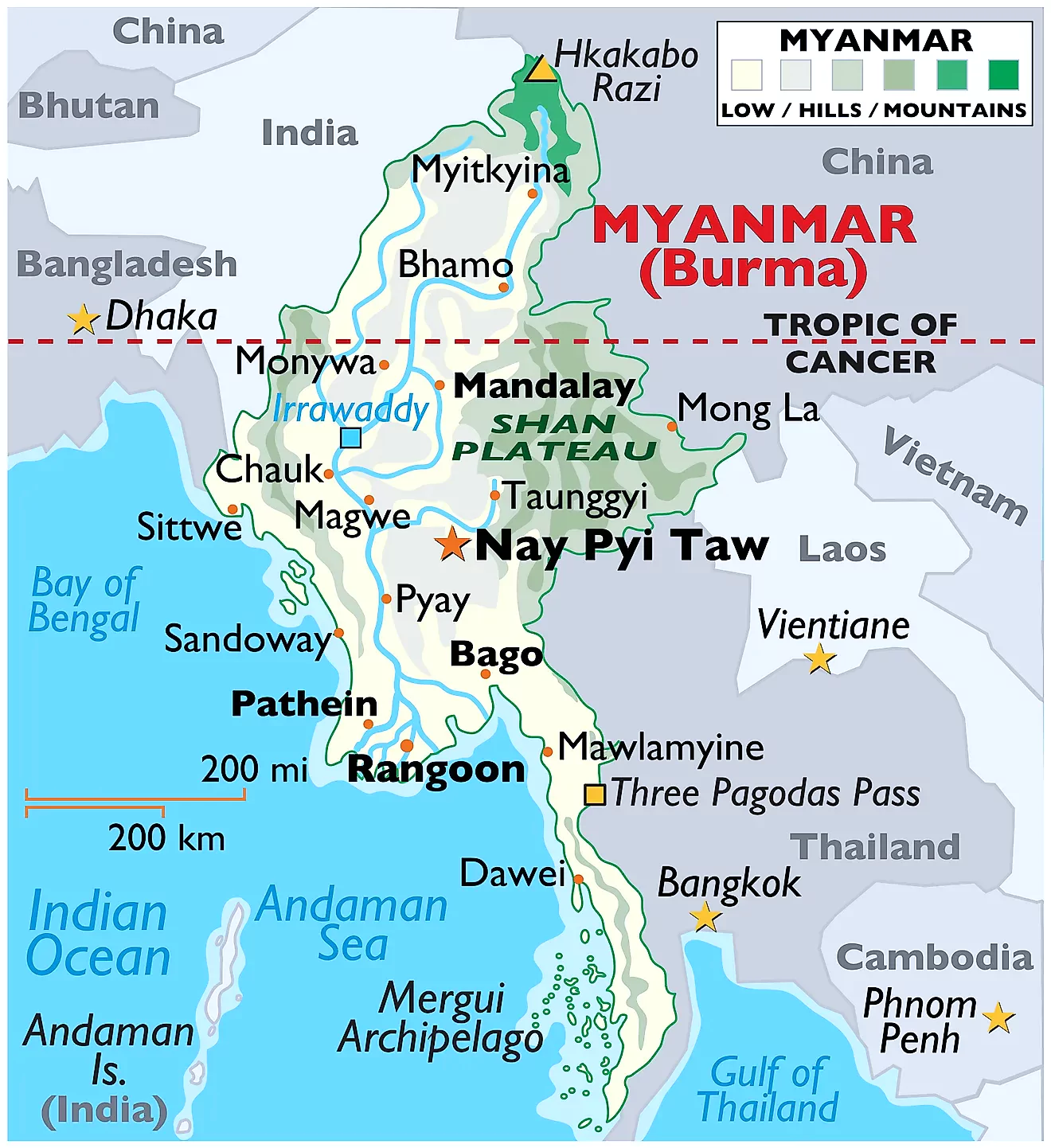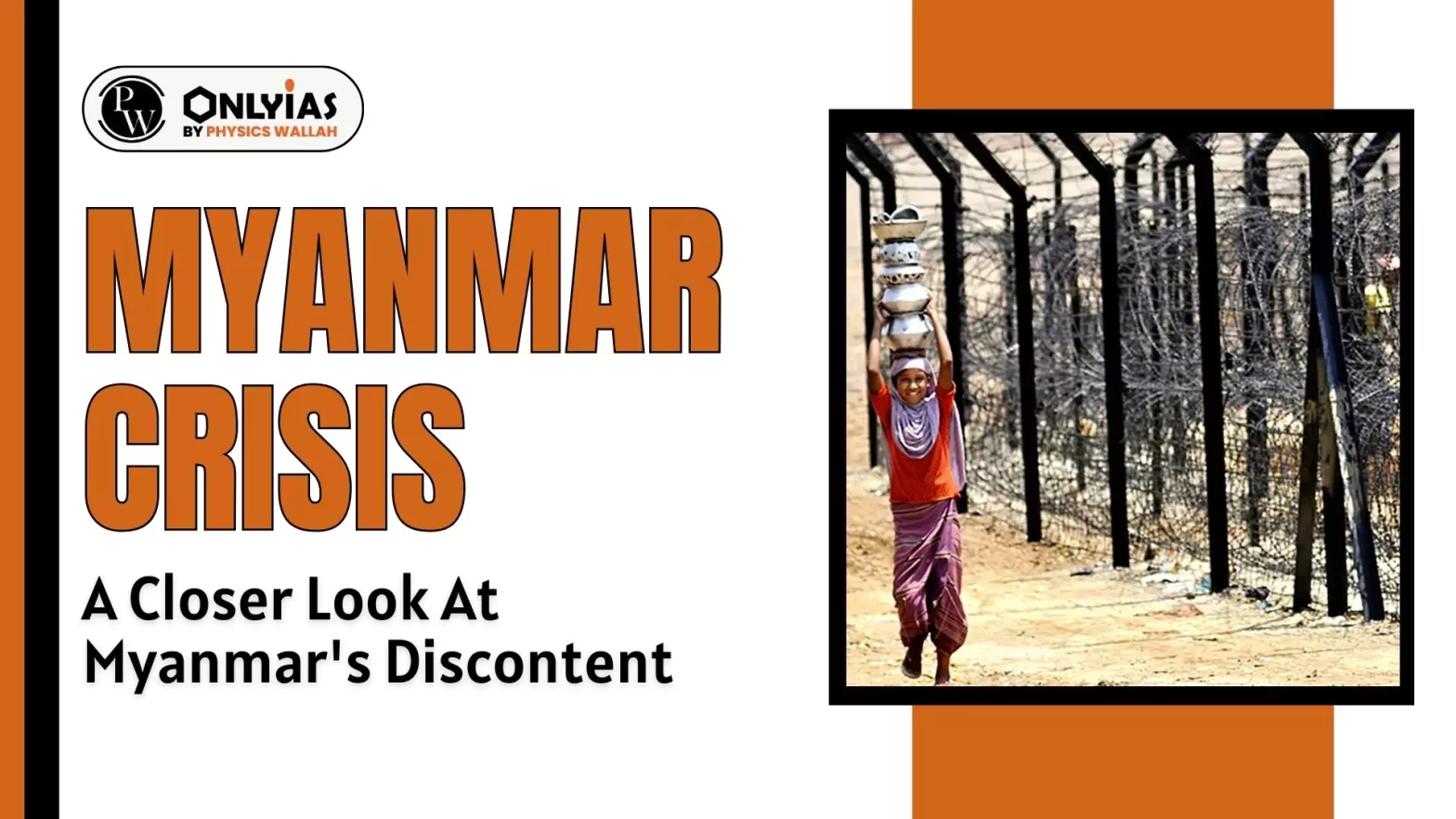Context:
This editorial is based on the news “A closer look at Myanmar’s discontent” which was published in the Hindu. In February, it will be three years since the army seized power in Myanmar, overthrowing a democratically elected government, which prompted a massive civil disobedience movement.
Myanmar Crisis: A Harsh Resistance
- By an Alliance: Last October, an alliance of the Arakan Army, Myanmar National Democratic Alliance Army, and Ta’ang National Liberation Army launched coordinated attacks on the military.
- Mass Resistance Movement: Since the coup, there have been sporadic reports of government officials, doctors, and police personnel assisting the resistance movement.
- A Territorial Shift: Massive losses were inflicted on the military in the Shan State, Paletwa town (a critical node in India’s Kaladan project) and witnessed a territorial control shift.
- Frequent Resistance: At the same time, the regions inhabited by the majority Bamar ethnic community, such as Sagaing, Bago and Magwe, also witnessed a significant spike in resistance.
- Facing the Consequences: Reports suggest that the military finds it difficult to recruit even from the regions dominated by Bamars, who constitute the bulk of army personnel.

Myanmar Map
Myanmar Crisis: Discontent and Territorial Loss to Myanmar Military
- Missing the Objective: It has failed spectacularly on one of its objectives of the coup to strengthen national unity.
- Loss of Territory: It has conceded large tracts of territory to the ethnic armed organisations and People’s Defence Forces (PDFs).
- Reason: The reasons for losing territory now have less to do with military incapacity and more to do with growing popular discontent.
- Facing Stress: A month ago, to evade an attack by the resistance groups, over 150 Myanmar soldiers moved into India and surrendered.
- There are reports of army officers served with severe punishment for failure to stop desertions, suggesting that military cohesion is coming under increasing stress.
- Reason of Discontent:
- Misuse of Power: When international sanctions were substantially diluted between 2010 and 2020, the military acquired air and army equipment.
- Adverse Impacts: Numerous reports indicate that the coup leaders have used firepower even on unarmed civilians, resulting in significant internal displacement and neighbouring countries facing refugee crises.
Myanmar Crisis: Role and Engagement of Various Nations And Organization
- Self-Interest Strategies of China: On international platforms, China defends the Myanmar military from international censure.
- Simultaneously, various ethnic armed organisations on Myanmar’s northern border have close relations with China.
- Regional Dynamics of Association of Southeast Asian Nations (ASEAN): The ASEAN has articulated a five-point consensus and denied the Myanmar military in its summits.
- Some ASEAN members are sharply criticising the Myanmar coup.
- Limited Impact: Despite repeated efforts, the ASEAN special envoy to Myanmar was prevented from having meaningful interactions with all the relevant stakeholders.
- Thailand, A Close Nation: With a shared border of about 2,416 km, Thailand wields significant influence in Myanmar.
- Influential Role: Thailand interacted with Myanmar’s military leadership along with the imprisoned leaders.
- Thailand hosts and engages with Myanmar’s exile organisations and, in the recent past, has made efforts to scale up its humanitarian assistance.
- Humanitarian Approach of India: India needs to consider a more proactive humanitarian approach for displaced communities in Myanmar. It also reduces the inflow of refugees into India.
- Pragmatic Approach: India needs to take further actions by considering three political realities- persistent discontent, resilient resistance to the Myanmar Military Coup, and a politically fragmented Myanmar.
Conclusion
Myanmar today is politically fragmented, with the military, ethnic armed organisations and PDFs having varying degrees of control in different parts of the country. The military seems to be losing more ground than gaining it. With the changing scenario, it is time for India to re-calibrate its Myanmar policy after consultation with all the relevant stakeholders.
Also Read: Instability In Myanmar And Its Impact On India
![]() 29 Jan 2024
29 Jan 2024


